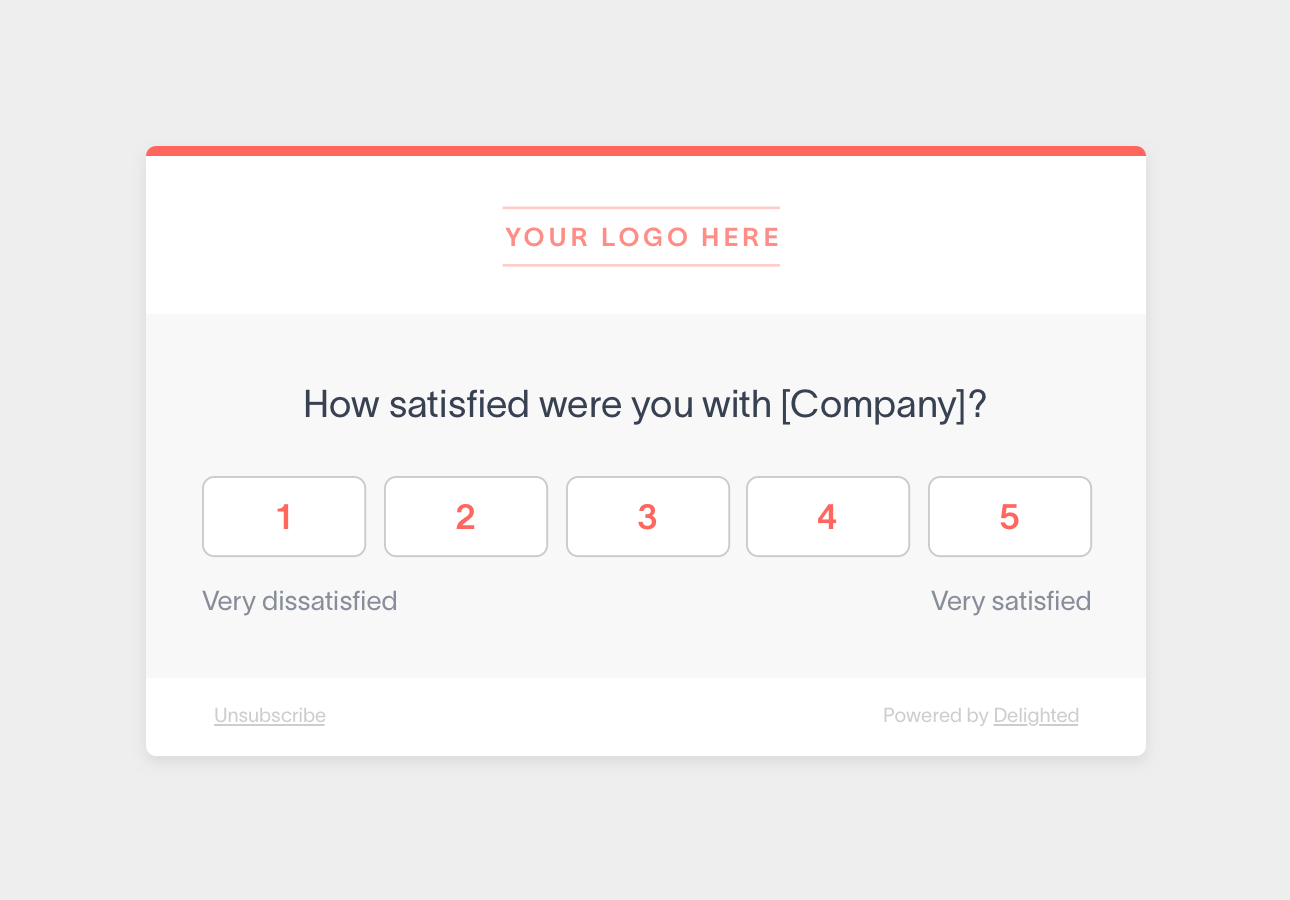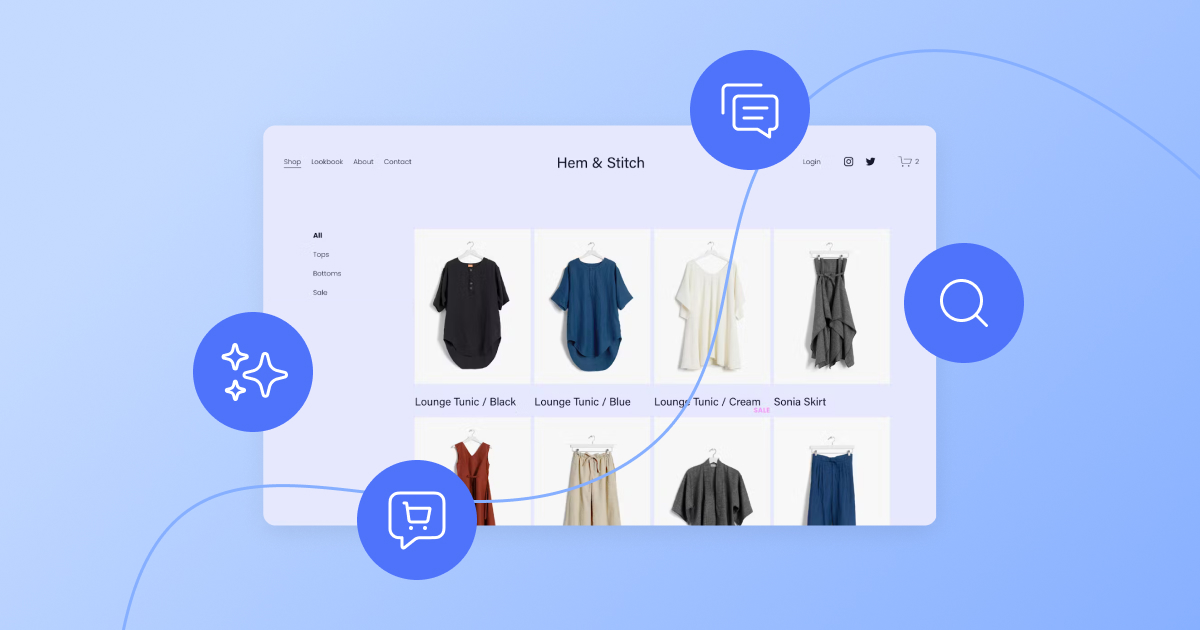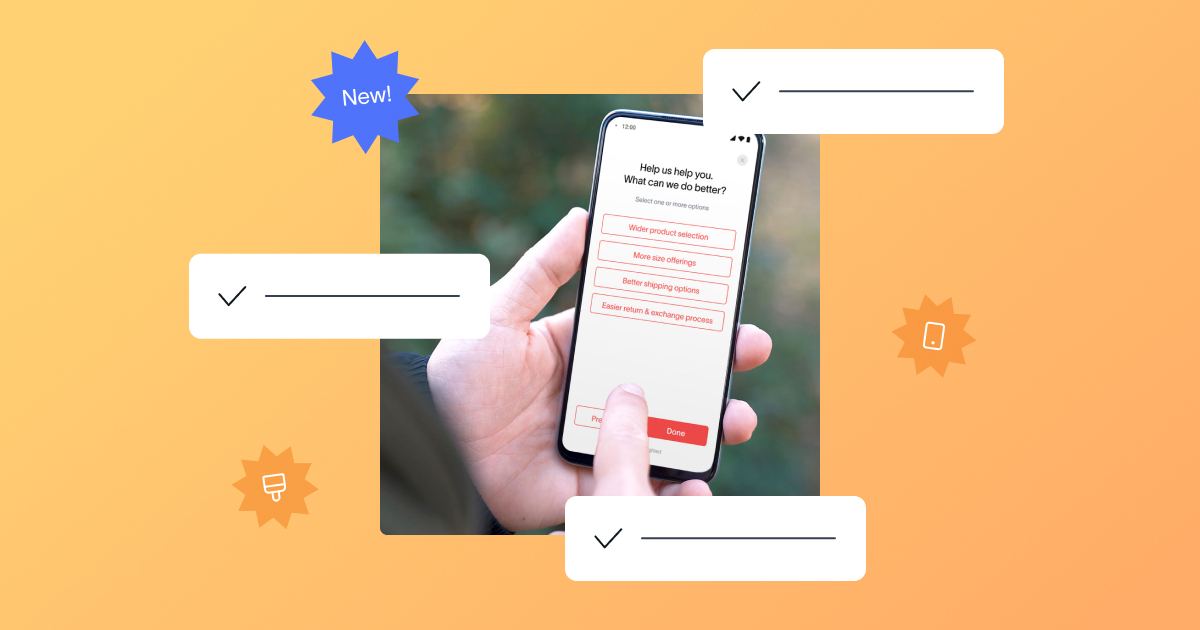Think of the shopping, dining, or travel experiences you enjoyed most. They probably didn’t just come down to the quality of the food or the products that you bought. They were associated with an experience that, as a whole, was pleasing and memorable.
Every interaction between a customer and your brand defines the customer experience. And, with 81% of marketers predicting that customer experience is how they will differentiate themselves from the competition, prioritizing CX now is how you can stay ahead of the curve to ensure growth in the future.
There is no other area that allows you to set your brand apart from other companies like customer experience. Other retailers may offer similar products. They may find a way to beat you on price. But, if you can deliver an exquisite experience for all of the customer interactions that matter, you will be the brand that wins. Plus, you will build a loyal user following that promotes your ability to consistently meet customer expectations.
The key is understanding what a customer is experiencing each time they interact with your brand, and how you can make that experience even better. Let’s look at how to measure customer experience and which metrics for customer experience to focus on so you can start boosting customer happiness today.
What is a customer experience metric?
Like everything else in your business, customer experience (CX) can be improved most effectively when it can be measured. With measurement data, you can identify the best ways to resolve critical customer pain points.
Customer experience metrics are a collection of criteria that your organization can use to measure how happy your customers are, so that you can actively work towards increasing customer loyalty and reducing churn.
Some metrics that can indicate how your customers feel about you are based on operational data. Metrics like resolution time on support teams or the lifetime value of a customer are easy to measure, providing clear and objective data to set team goals.
Other criteria that deal more explicitly with customer sentiment toward your brand can be tougher to measure. These customer experience metrics measure things that can seem subjective, such as customer satisfaction. However, by asking your current and potential customers the right questions, you can get a clearer picture of how the customers you value feel about you.
By evaluating your operational data in the context of customer experience metrics driven by actual customer feedback and sentiment, you’ll have a better idea of where you’re hitting the mark with customers, and where there’s room to improve.
For instance, you might learn that customers are generally satisfied with their experiences with you, but aren’t excited enough that they promote you to their friends. Or, you may learn that your customer service agents are great at solving customer issues, but a majority of callers are waiting much too long to get access to that stellar customer service.
Over time, measuring your performance leads to the best customer experience possible, which, in turn, leads to more valuable relationships and better revenue for your brand. You can learn which improvements are likely to reduce churn and make customer relationships last longer. You’ll also learn which actions you can take to turn current satisfied customers into happy advocates for your brand.
Which metrics should you track?
There is no one set answer to this question. The metrics you should track depend on what insights or knowledge gaps you are trying to fill, and the customer touchpoints you’re looking to explore.
To start, it’s important to understand what your goals are. Are you striving to improve the ease of your checkout process? Or, maybe you want to know how loyal your customers are to your brand in general. Once you nail down your goals, you need to figure out the metrics that measure those goals. And once you select the metrics, you can use them as key performance indicators for customer experience (CX KPIs) so that your team can get laser-focused on benchmarking and improving your scores.
Your brand will not succeed or fail based on a single metric. Your success, instead, is based on what you do with those numbers and how you’re staying on top of them. These are criteria that you can use to see where you need to enhance your brand experience based on values you can authentically promote. Over time, you should see improvement as you put changes in place.
Popular experiential CX metrics
Choosing your metrics can seem a little daunting. The popular experiential CX metrics below are a good place to start. You can measure them using a customer experience management software to learn more about how your customers feel about your brand.
Customer Satisfaction (CSAT) score
What is CSAT? CSAT, or customer satisfaction, is a metric that measures how satisfied customers are with your products and services. It is most commonly measured every time one of your customers interacts with your customer service representatives. However, you can also use CSAT surveys to gather feedback on a product, sales demo, or any other instance where a customer interacted with your brand using our customer satisfaction software.
Depending on what touchpoint you’re gathering feedback on, this measurement can give you a good picture of how the teams responsible for each aspect of the customer journey are performing, and how well your products are resonating with your customers.

CSAT is typically measured through a one-question survey. Ask the customer to rate how satisfied they were with their interaction. Options can go from 1 for completely dissatisfied to 5 for completely satisfied. For more insight, append an open-ended comment form to the initial CSAT question so customers can explain why they chose that customer experience rating.
Then, calculate your CSAT score by dividing the number of people who rate their experience a 4 or 5 by the total number of people who responded. The number you get, expressed as a whole number, is your CSAT rating. So, if a total of 100 people responded to your survey, and you are given 60 5s and 13 4s, you have a CSAT rating of 73.
Net Promoter Score (NPS)
Net Promoter Score is a number that predicts how likely someone is to talk favorably about your brand. The higher your score, the more positive buzz your company is likely to generate. It also reflects higher trust in your brand. When people know the person who speaks positively about a business, it makes them more likely to do business with you, too.
In marketing, this is often referred to as “social proof,” and it is recognized as one of the most powerful tools in your repertoire. People trust the opinions of the people they know. If those opinions of your brand are positive, the trust that a prospect has in their friend transfers to you.

NPS is measured through a single question that asks customers to rate on a scale of 1-10 how likely they are to recommend you to a friend. Customers who are 9s and 10s are more likely to speak positively about your brand, and 0s through 6s are more likely to speak negatively.
This rating question is followed by an open-ended comment box where customers can provide extra feedback on the context that led to the score. This context is where you’re most likely to get the concrete feedback you need to improve your score, and your customer experience.
Your final Net Promoter Score can range from -100 to 100. To calculate your NPS, subtract the percentage of detractors from the percentage of promoters.
Customer Effort Score (CES)
This number describes just how hard it is for someone to achieve a specific goal with your brand. This goal could be getting a product shipped to them, resolving a complaint, or simply getting the answer to a question before they order.
The reason that this metric is valuable is because it helps erase friction between your customer and a conversion. Every additional hurdle a customer has to get over makes it that much less likely that they will continue to do business with your brand.

Determine your CES by asking customers to rate from 1-5 how easy it was for them to accomplish their goal, phrased “[Company] made it easy for me to [accomplish a task].” The number of people who agreed (rated you 4 or 5) divided by the total number of survey responses is your score.
Check out our guide to learn more about what Customer Effort Score is and how you can leverage it to improve the customer experience to increase loyalty.
Visitor intent
When someone walks into your storefront, navigates to your webpage or calls you on the phone, what do they wish to accomplish? How well does that intent align with what they actually do when they interact with your brand?
Intent can be found by surveying customers. For example, to learn more about how customers feel about your online Help Center, you can start with a website CES survey question: “[Company] made it easy for me to find the support resources I was searching for” with an agree-disagree answer scale. Follow up with an open-ended question that asks “What was the primary resource you were looking for today?” to gain more qualitative insight around their intent.
Once you understand what your customers are trying to accomplish, you can create or improve upon the experiences that help them accomplish their goals.
Employee engagement (eNPS)
Employee engagement, measured through an employee NPS (eNPS) survey, and customer experience are intrinsically linked. Employees who feel engaged and enthusiastic about the company and the job are likely to pass that positive feeling along to the customers when they interact. By the same token, employees with a low level of engagement are less likely to give each interaction their all.
Short, frequent, anonymous surveys are a good way to gauge employee engagement. You can modify the Net Promoter Score question to be employee-facing by asking “How likely are you to recommend working at this company to a friend or family member?”
Follow that initial question with Additional Questions about morale levels, the level of challenge they feel in their job, and how engaged they feel in their current tasks.
Top operational CX metrics
The experience-related metrics above are based on subjective criteria. Nonetheless, measuring customer experience with metrics can give you some of the most direct information about how your customers feel about your brand.
Using them together with these operational CX metrics can help you see how you are currently doing, and how you are progressing toward your goals over time. Many of these metrics can be extracted from your customer relationship management (CRM) tools or through specific CX metrics tools.
Important metrics to watch over time include:
Customer churn
Customer churn, which is also often referred to as customer attrition, is the rate at which customers choose to stop doing business with your brand. There is no one predictor that will lead to churn. However, keeping up with this number can show you when you are failing to retain customers. On average, a company will lose around 15% of its customers each year. If you can reduce churn to a level that is lower than your competition, you are ahead of the game.
Learn how to calculate your customer churn rate.
Customer retention
Retention is the opposite of churn. Your customer retention rate is the proportion of your customers who come back to do business again with your brand. Attaining and converting new customers is time-consuming and expensive. If you can reduce churn and increase your retention rate, you can significantly increase your company’s net revenue over time.
Learn how to calculate your customer retention rate.
Customer lifetime value (CLV)
Customer lifetime value is the revenue from a customer over the life of your relationship with them. The higher the lifetime value, the better your return on your investment in this customer. Keeping customers happy with your brand is key to retaining them and increasing their spending with you.
You can also increase customer lifetime value by using tactics that increase spending with you during any one session. For instance, a shopping cart add-on that suggests related products can increase customer lifetime value. Well-timed emails that check in on the customer and make them feel cared for also increase lifetime value.
Learn how to calculate CLV using the customer lifetime value formula.
Behavioral analytics
How do your customers interact with your brand? When they visit your site, how long do they spend there? What actions do they take? Which pages do they head to most? How often do they start an action, such as a purchase, but abandon it before they complete it?
Information in this category can tell you a lot about the experience that your customers are having on your site. If they are frustrated with navigation, the amount of fields you require them to fill out, or another factor, it will come through in their behavior. Watching how they behave can allow you to create a site that is more intuitive, relevant, and user-friendly, and ultimately increase your conversions.
Tracking cookies, combined with website surveys to measure visitor intent, can tell you about how customers behave when they visit your site. By tracking their behavior over time, you’ll be able to see which changes have the most positive impact.
Customer support metrics
These are measurements that will include technical details of interactions with customer support. How long until a customer receives a response? How long does it take to get from the initial conversation to a resolution? The latter should be measured in the number of interactions as well as the time spent by the customer each time they contact your brand.
Leaving a business because of poor customer service is an incredibly common occurrence. More than eight in ten consumers say that they’ve stopped doing business with someone because of bad customer service.
However, even more say that they will go back to a business who makes a mistake and fixes it through good customer service. The better your brand is at solving customer service dilemmas, the more likely that brand is to retain their customers over time. This, in turn, dramatically increases the lifetime value of each customer and your company’s revenue.
Each of these metrics should be measured on a regular basis so that you can see how your teams and your organization as a whole are working toward a better customer experience. Over time, you can see where you are improving, where your brand’s products and services are resonating positively with customers, and where you need to use new tactics.
We can help you get to the data that will tell you more about your company’s CX. Delighted makes it easy to create customized surveys that give you the answers you need in a simple, clear format. You can also easily integrate all of your experiential metrics into your existing CRM tools, so you can analyze customer feedback in the context of your operational customer experience metrics.
Ready to get started? Sign up to start collecting customer feedback at no cost.







